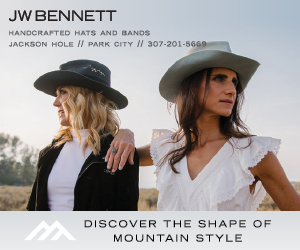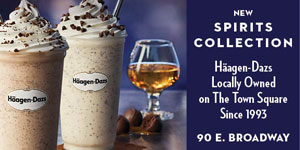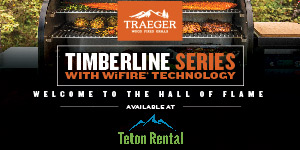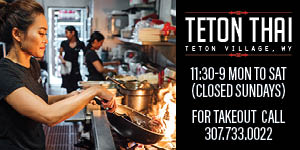“My goal is to develop a line of grass fed, locally raised bison that we can offer in the local market,” says Chris O’Blenness, owner of Jackson Hole Buffalo Meat Company, adding, “As steaks, burgers and even potentially quarters, halves and whole bison if somebody really wanted.” This year, O’Blenness took a step closer to that goal—when he brought a herd of bison to Teton Valley, Idaho.

Born and raised in Jackson, after years in the farm to table arenas of California, Idaho and New York, O’Blenness returned to the area and purchased the Jackson Hole Buffalo Meat Co. six years ago. “I got into this business to raise buffalo,” O’Blenness explains. “I raised livestock for a long time.” While in New York, he worked for Stone Barns Center, and their restaurant Blue Hill, which is known for its farm to table experience. There, he ran the livestock department, raising everything from chickens to cows to goats to pigs.
Originally established in 1947, today, Jackson Hole Buffalo Meat Co. ships buffalo and elk meat to all fifty states, in addition to selling locally out of their 1325 South Highway 89 storefront. For the last 75 years, the bison meat has been sourced from all over the western United States.
In 2021, O’Blenness and his business partners were approached with the opportunity to buy land in Teton Valley. When the deal was done, they ended up with a square mile of property, and got to work fencing it in, drilling a well and preparing it to support a herd of bison. The final piece of the puzzle fell into place at the start of this summer—when they purchased ten yearling bison. Weighing about 700 pounds each, O’Blenness hopes that the bison can put on a couple hundred more pounds by October. At that time, they’ll head to Idaho Falls for processing at a brand new state-of-the-art facility.

“We started with ten because we want to start small to make sure our infrastructure and our fences work properly and that everything went according to plan.” Should this initial year prove successful, O’Blenness expects they may expand to twenty or thirty bison, but really, he anticipates the tract of land to be able to support fifty animals per summer. Their ideal weight at processing is 850-1000 pounds. O’Blenness says, “You could have them processed even as small as 750, but I really want to get a nice big ribeye, fill out the tenderloin and make sure that they’re filled out properly. It’s going to be really cool for us to be able to say these ten animals were raised in this specific style on this specific diet.”
Most of the bison that are raised in North America are finished on grain, but this situation presents the Jackson Hole Buffalo Meat Co. with the unique opportunity to offer a different product line. The company not only believes in raising animals on the open range, but also works to preserve grasslands for the next generation. By supporting traditional methods of raising bison, they aim to create a more sustainable food system.
“This will be an opportunity for us to be able to tell that story and to be able to say this is how we raise these animals, this is where they came from, and this is the plant community that they were grazing. We can have a little bit more control and a little bit more insight into how they’re living than we get from the products that we buy from slaughterhouses.”

Looking to the future, O’Blenness aspires to one day be breeding his own animals, managing their genetics and field harvesting bison. “That’s the ultimate goal—for the humane treatment of the animal, the quality of the process and production, and the end quality of the meat,” he describes. “But I have to find those specific consumers and customers that care enough about that level of consideration for the animal and the process that are willing to go along on this journey with me.”
For now, he feels fortunate to have been presented with the opportunity to bring these animals to Teton Valley. “They came from central Nebraska, where it was pretty dry and warm, and now they’re in the Tetons, it’s lush, and they’re staring at the Grand Teton all day. And they’re drinking melted snow from the Tetons. So, they’re living pretty large and seem right at home.”
When it comes to managing the herd, O’Blenness notes, “I’ve raised a lot of different kinds of livestock and I’ve never raised anything that was as hands off and low maintenance as these animals are. They’re still wild animals, but we’re basically just providing them a space to exist in and the sustenance that they need. Beyond that, they don’t need us.”

If you’re tempted to try bison meat but not sure where to start, the Jackson Hole Buffalo Meat Co. is a local gateway to high quality wild game meats. They offer a range of cuts and even have recipe suggestions on their website and social media to get your creative juices flowing in the kitchen. And if you’re already a fan of bison meat, you won’t be disappointed with the quality and taste of the meat from this company, or its other wild game products.













